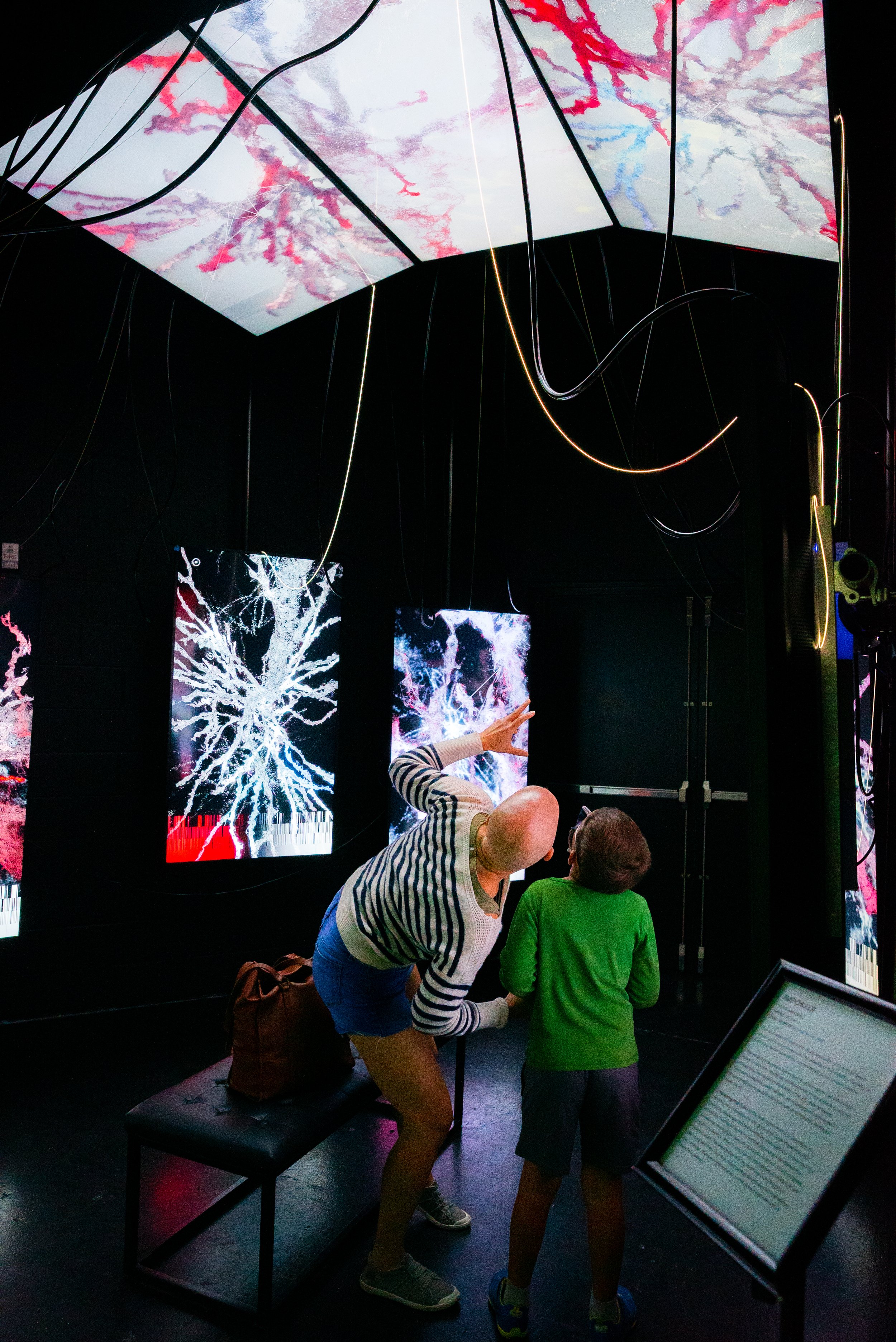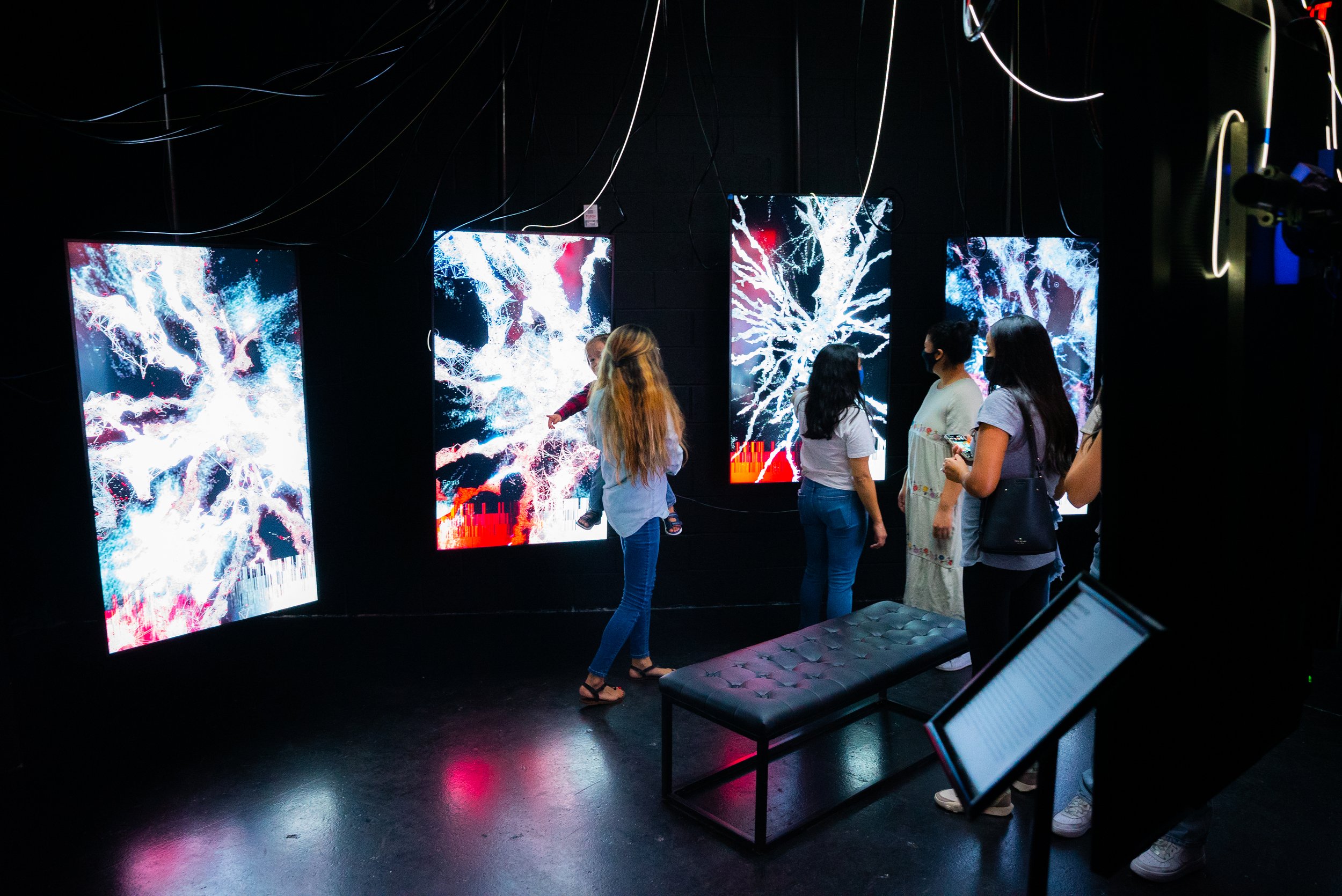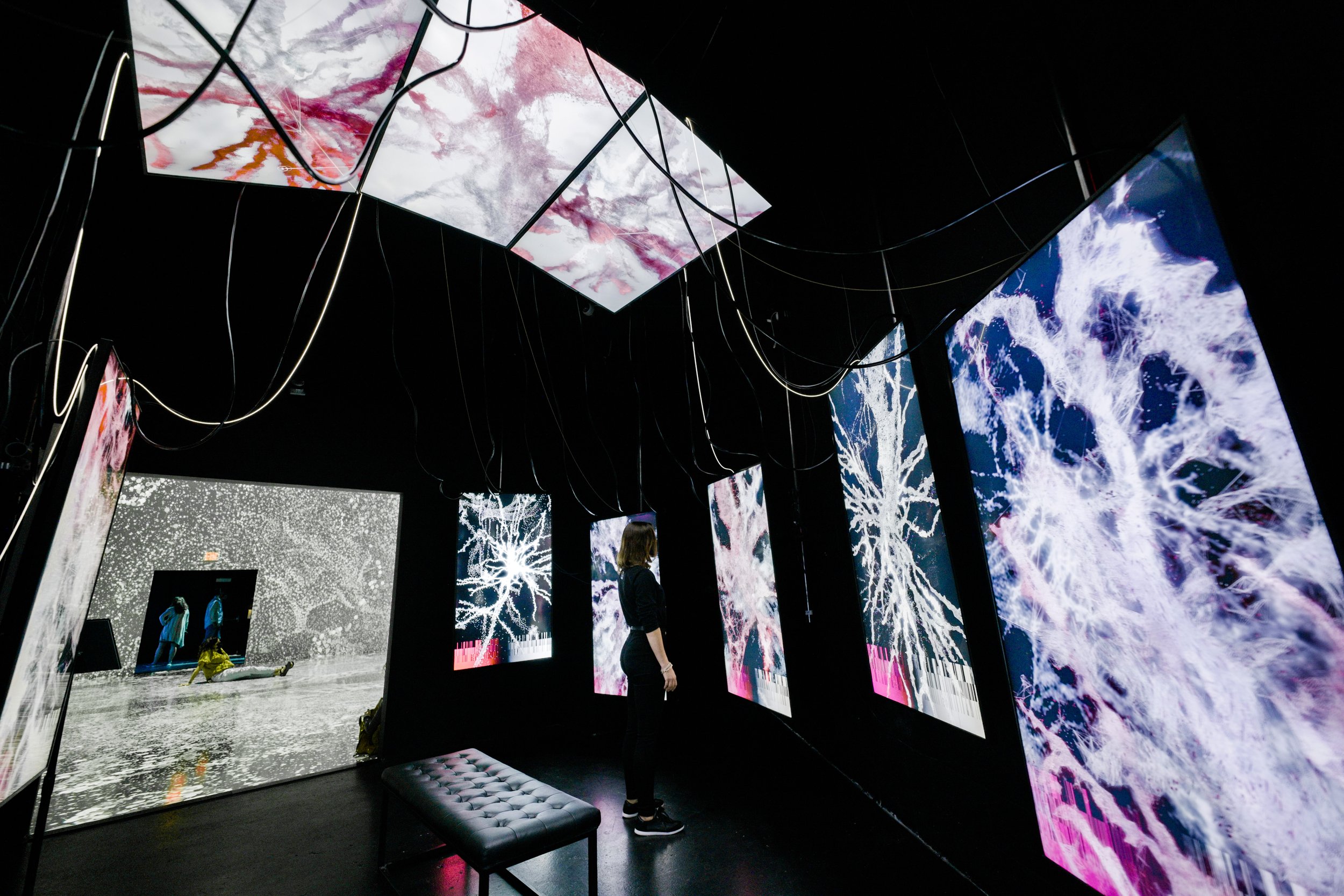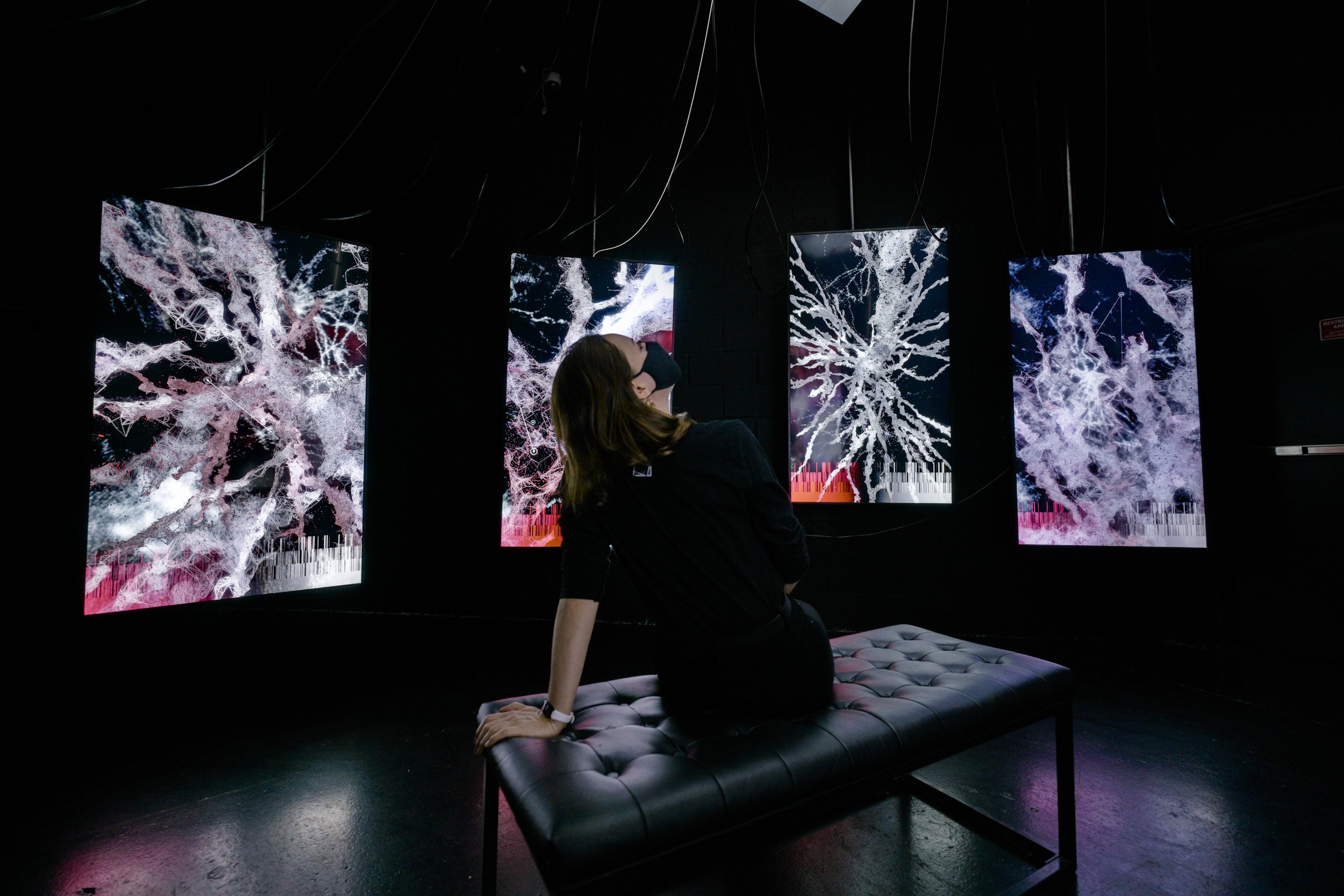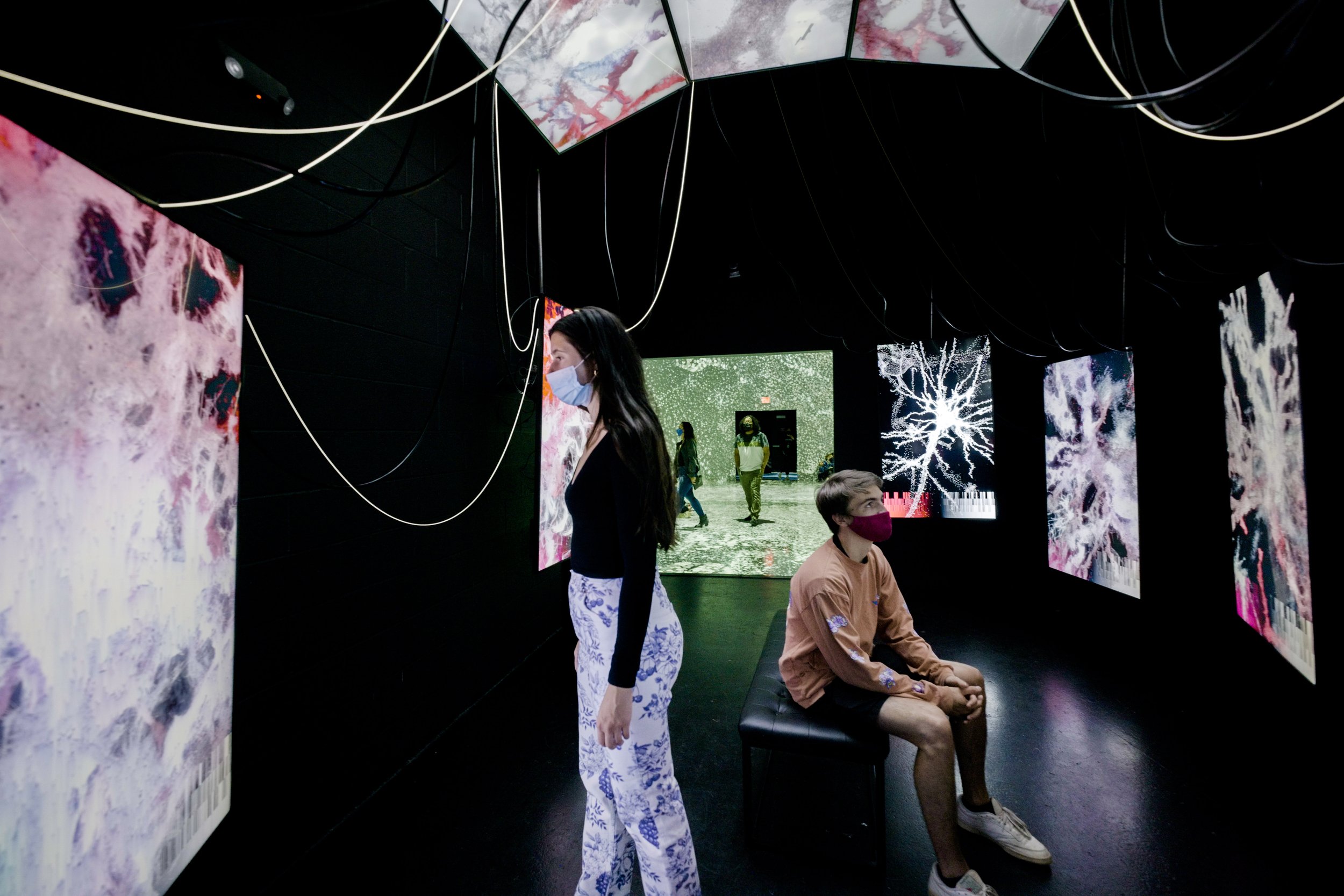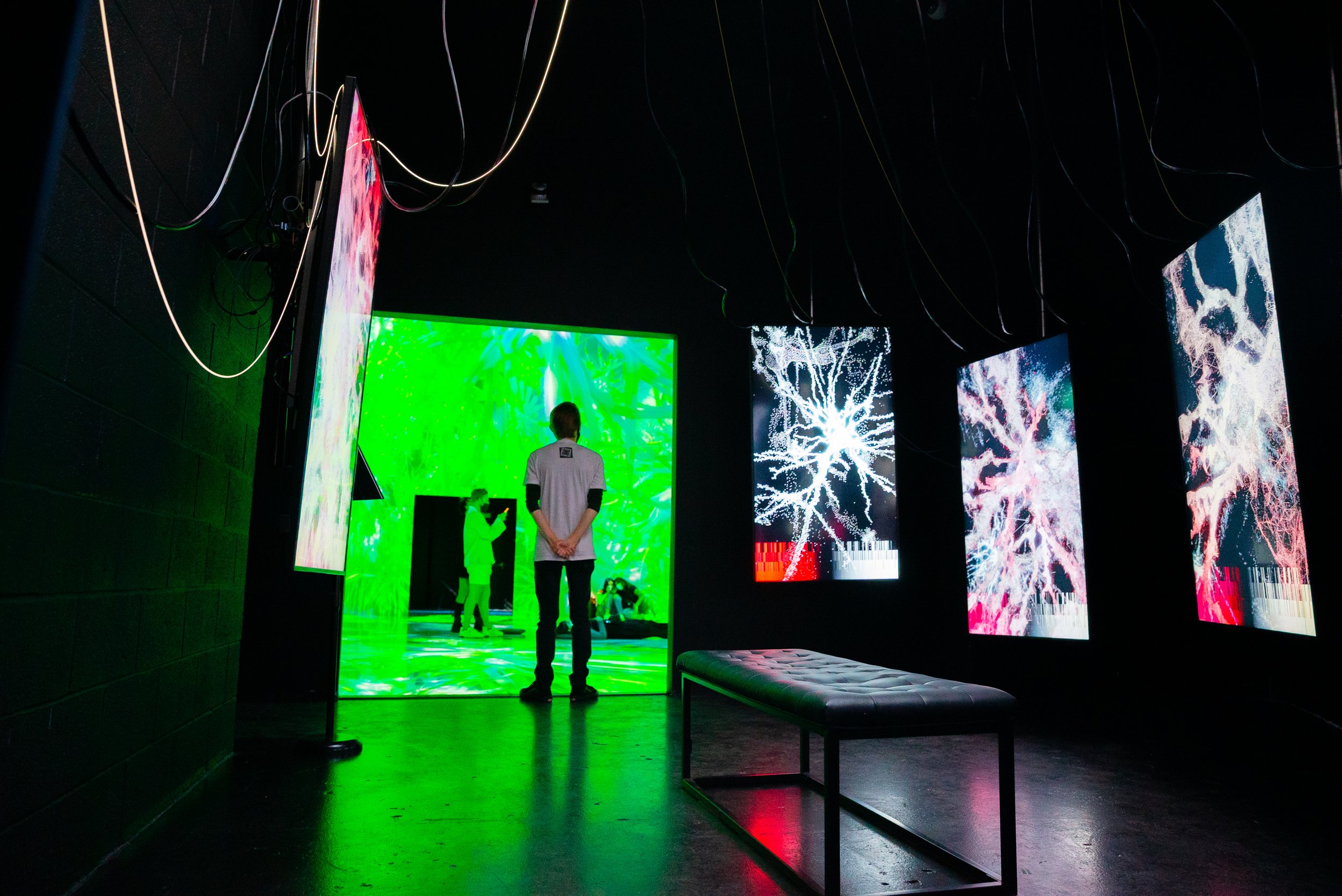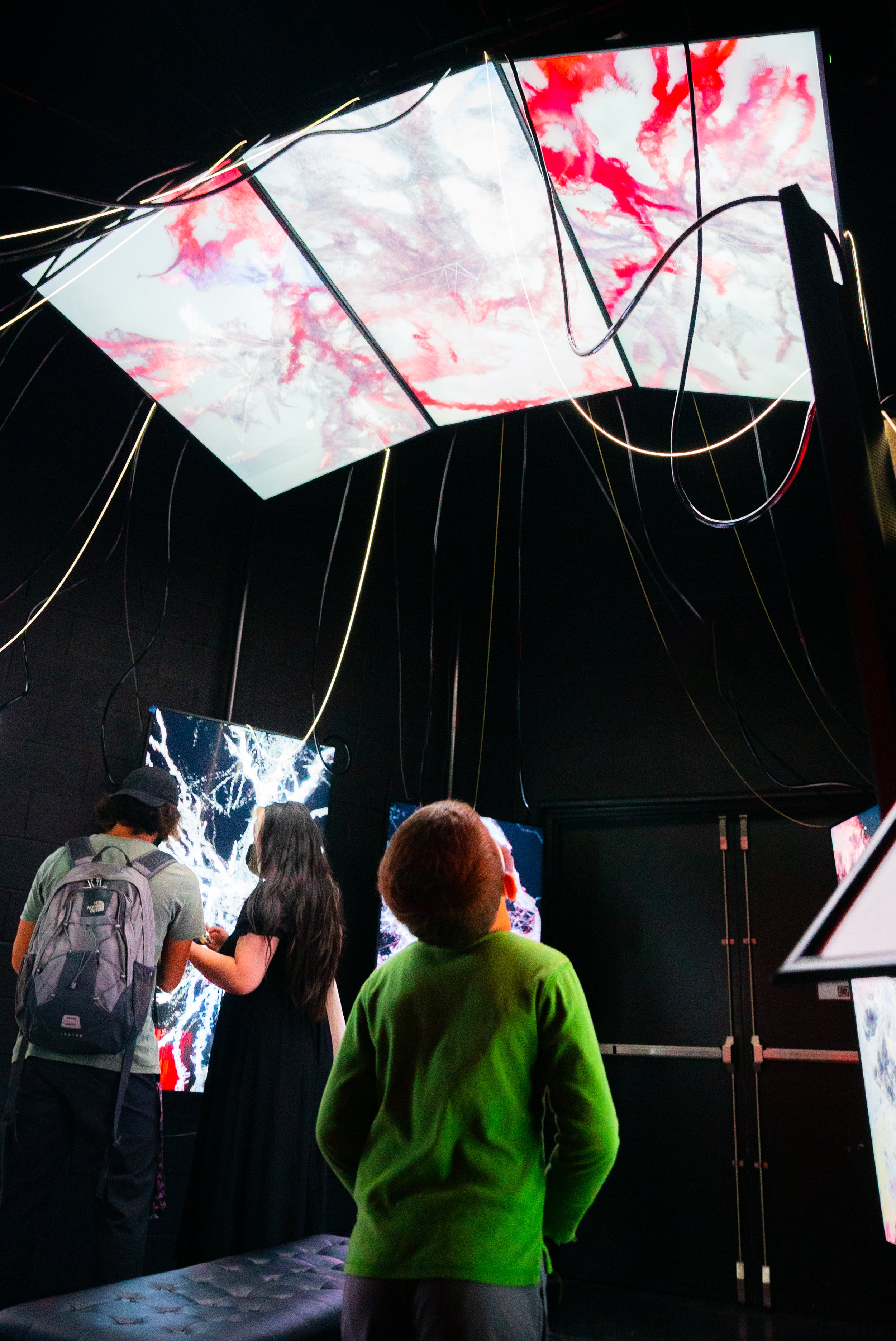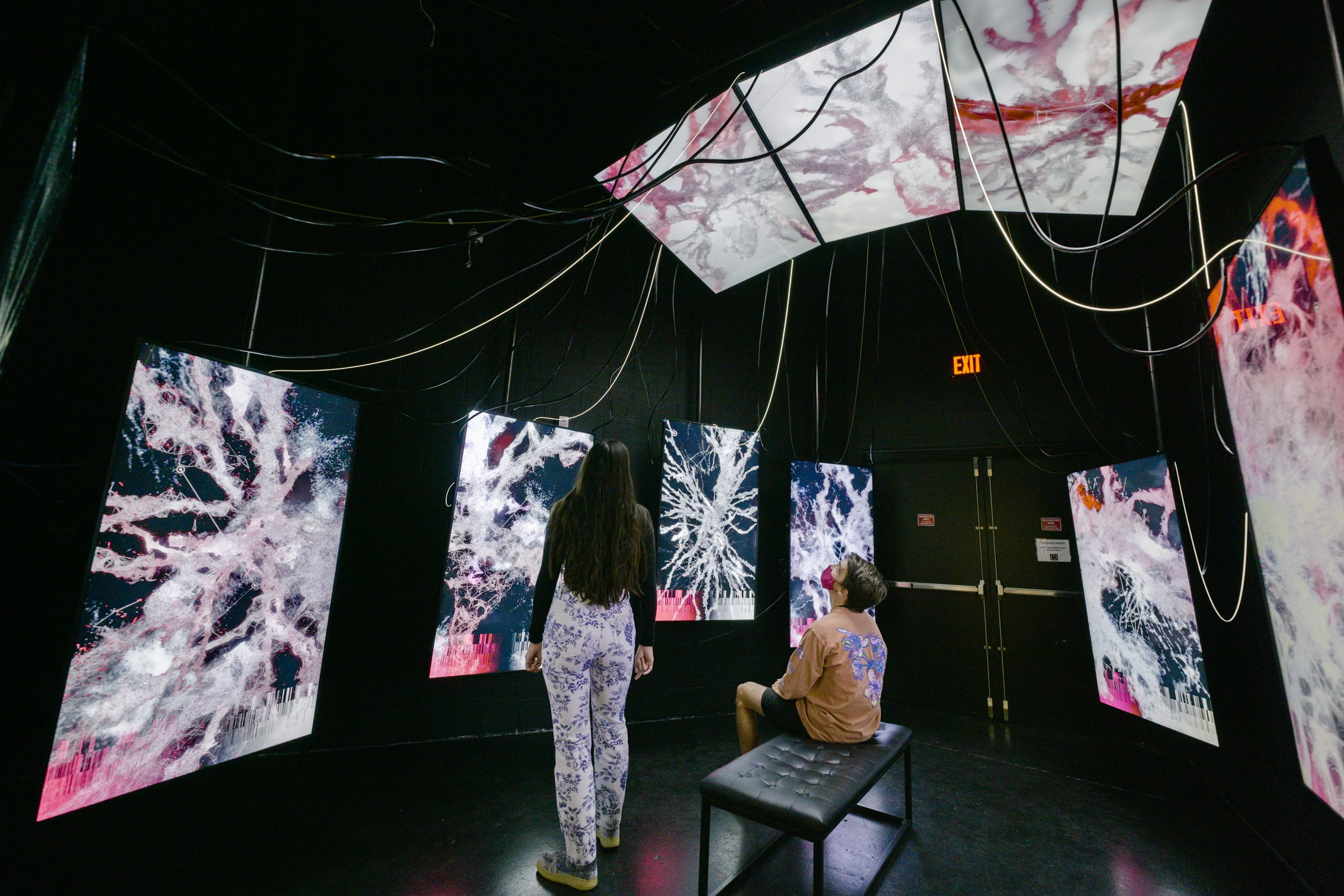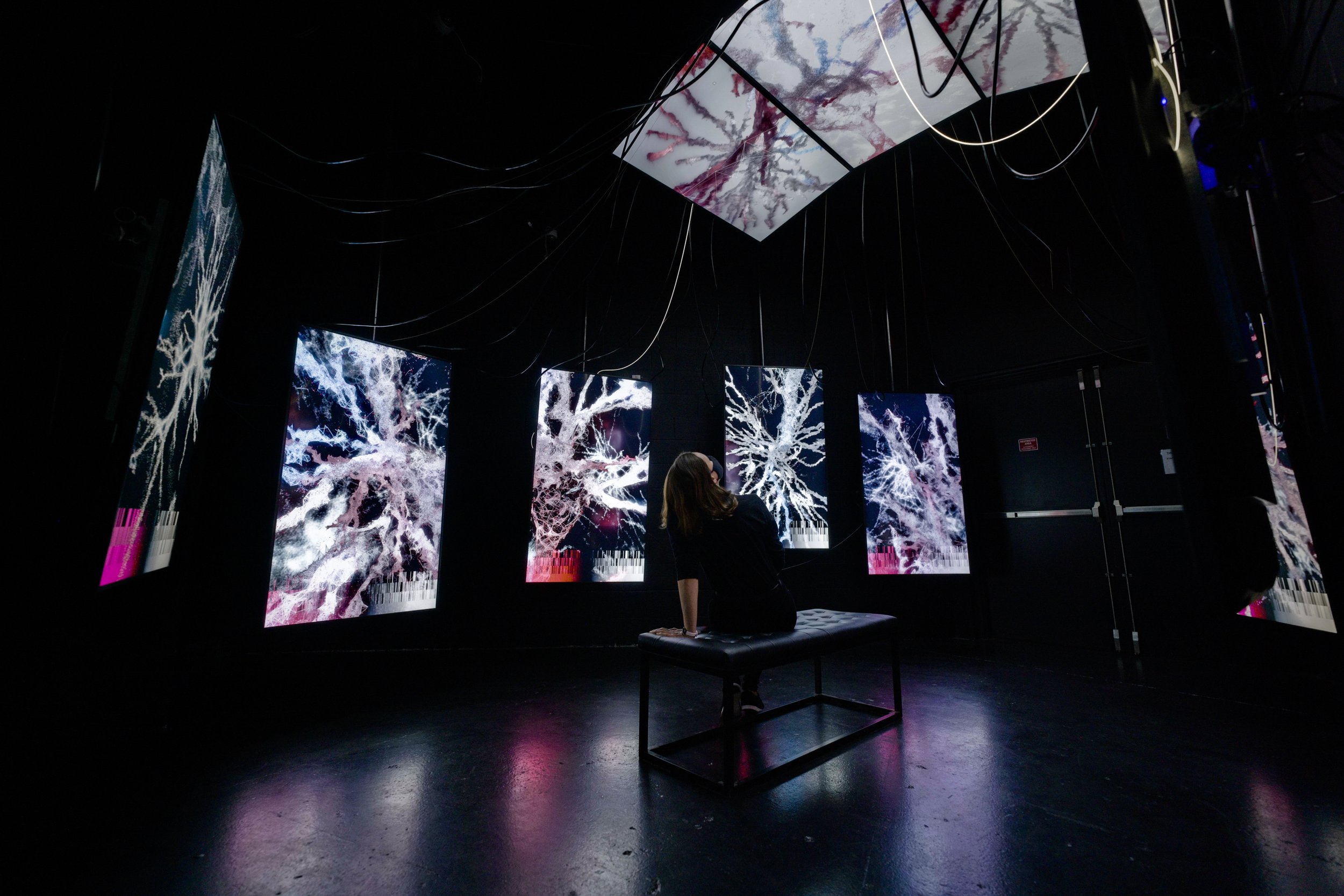
IMPOSTER
IMPOSTER
COMISSIONED BY: ARTECHOUSE
EXHIBITION: Life of the Neuron, Artechouse, Washington D.C.
TOPIC: Addiction
ARTIST: Light Node Cult (Gil Castro)
LEAD SCIENTIST - Eric Nestler, MD, PhD
It may be subtle, but our everyday life is a continuous string of rewards or lack thereof. Noticing the nice weather, feeling how pleasant it is to lie in bed, or how good that bite of food was is the same brain function shared with addiction. We are what rewards us. However, effects of drugs far exceed in magnitude and duration the effects of those natural rewards. This is why addiction is often explained in the context of drug usage, but in essence, all addiction works the same way. Stress makes people vulnerable to addiction since the natural reaction to stress is to seek remedy to the unpleasant feeling.
Deep at the base of the brain is a collection of neurons that utilize dopamine as a chemical messenger neurotransmitter. These dopamine neurons, just about 300,000 out of 100 billion neurons in the entire human brain, are located in a region of the brain called the ventral tegmental area (VTA). This cluster of neurons that control addiction is about the size of a rice grain. The main function of these neurons under normal conditions is to signal to the rest of the brain when an individual experiences something rewarding (e.g., food, sex, social interactions) or aversive (e.g., stress, pain, fear).
At its core, addiction is about control of dopamine neurons, which in turn can be interpreted as control of our reward system. Addiction stands out from other mental disorders in that it takes one’s own volition to trigger it in the beginning and to continue to engage in the addictive activity. The mechanisms in our brain for both drug and non-drug addiction, (such as video games, social media, overeating, etc.) overlap. The main difference lies in the speed and amount of dopamine delivery. Drug addiction causes more serious behavioural consequences than social media addiction because most drugs' effects are immediate and direct from the bloodstream to the brain. Whereas the effects of social media need to pass through layers of interpretation in the brain’s mechanisms.
Imposter is an abstract, real-time, interactive visual simulation that focuses on how drug abuse affects our neural connections, mimicking, blocking or producing neurotransmitters that are deeply related to our reward system. This interactive installation registers visitors as a drug and shows, in real-time, the impact on neural connections. The screen immediately to the left when entering the space represents a healthy neural network, each screen shows a progressively worse level of addiction, ultimately showing the chaotic and damaged brain above.
Imposter
Artechouse, Washington DC
2021
Custom software, monitors, lidar
